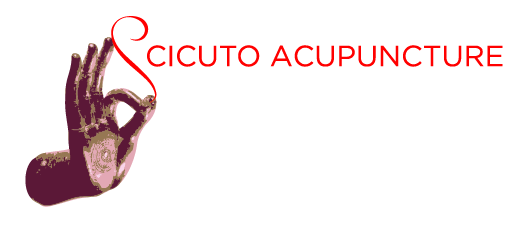Moxibustion: Acupuncture Without Needles
(This article originally appeared in AcuTake Health.)
Acupuncture is about more than just needles. In fact, the Chinese word that typically gets translated as acupuncture, zhenjiǔ, actually means “acupuncture and moxibustion.”
So, what the heck is moxibustion?
Acupuncture goers may know moxibustion, or moxa, as the smoky-smelling stuff that sometimes appears during a treatment. More specifically, moxa is an herb—known as mugwort or Artemisia vulgaris—that gets burned on or near an acupuncture point.
Burned?! Stay with me. It’s not as scary as it sounds.
Moxa is a soothing addition to any acupuncture treatment, and it’s especially useful for patients who are not fans of needles.
At my acupuncture practice, I use moxa frequently with great success. I also get a lot of questions about this relatively unknown healing technique.
Here are answers to some of the most common questions about moxa.
Why do acupuncturists use moxa?
Acupuncturists use moxa to warm the body and to bring more qi and blood flow to an area. Moxa typically is applied to places where there is stuck energy or pain, or where the body feels cold. Moxa is used to strengthen the immune system as well.
Often, the placement of moxa coincides with acupuncture points, which is why moxa is said to enhance the effects of acupuncture needles. A classical Chinese text about acupuncture says, “When a disease fails to respond to medication and acupuncture, moxibustion is suggested.”
Does moxa hurt?
Moxa should not hurt. Before using moxa directly on the skin, acupuncturists apply a burn cream that prevents any pain or scarring. As the moxa burns down to the level of the cream, at worst, the patient may experience a mild mosquito-bite feeling.
There are also several forms of indirect moxa, which create a warming effect without ever coming in contact with the skin. For an example, an acupuncturist may hold a burning moxa stick around an acupuncture needle, raised a few inches from the skin. Or he may put some moxa on the handle of a needle and place a metal shield on the skin to catch any falling ashes.
If moxa ever feels too hot, tell your acupuncturist and he or she will remove it immediately. Either an acupuncturist or an assistant should stay with you in the treatment room whenever moxa is burning.
What does moxa look like?
Moxa belly bowl
There are many different types of moxa. There is loose moxa, moxa that has been molded into sticks, and okyu (moxa that’s rolled into small pieces about the size of a rice grain). There are also moxa boxes, moxa sticks, smokeless moxa sticks, tiger warmers, and “belly bowls” (see photos in my moxa demonstration videos here)
Certain moxa types are better suited for smaller areas (okyu, for example) while others, such as tiger warmers, are selected to bring heat to a larger area on the body.
Occasionally moxa is combined with another herb, such as ginger or garlic, to produce complementary effects. For example, to treat someone with a cold and achy stomach, an acupuncturist might place a slice of ginger over the patient’s navel and then burn some loose moxa on top of the ginger.
Is moxa always smoky?
Burning moxa can create smoke in the treatment room. Certain types of moxa are smokier than others, and some contain herbs that produce a pleasant smell. Some people enjoy this while others find it overpowering.
If you prefer a smoke-free treatment, tell your acupuncturist. He or she may be able to offer you smokeless moxa. There are also moxa ointments and self-warming moxa patches that produce no smoke. Many acupuncturists have these options available because some buildings do not permit the burning of smoke-producing moxa.
Can I do moxa on myself?
Yes. One of the safest ways to do moxa on yourself is to use a tiger warmer. A tiger warmer does not get applied directly to the skin. It is a metal device about the size of a pen that is held above the skin to produce a warming effect on the general area.
If you buy your own tiger warmer, instructions on the box will guide you through how to use it. If your acupuncturist sends you home with one, he or she will explain the process. In either case, it’s a good idea to get advice from an acupuncturist about where to apply the tiger warmer.
For example, a tiger warmer can be safely used on acupuncture point Stomach 36 if you want to boost your immunity. You’l find my video demonstration for using a tiger warmer on this point here. An acupuncturist can provide additional point recommendations for immunity, chronic pain, and more.
At any time of year, to help relieve pain and to warm you up, a little moxa can go a long way.


